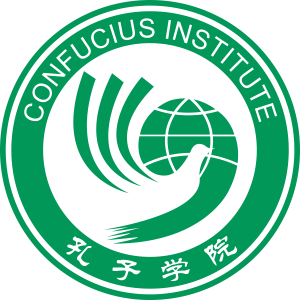The Promises and Perils of Language and Culture Promotion in International Politics
By Dr. Jeffrey Gil, Flinders University
Imagine there was a country which decided to promote its language and culture around the world. This country had experienced several decades of spectacular economic growth and was a rising world power. This country knew that there was some apprehension about its rise and was eager to address this. Its leaders hoped that promoting its language and culture would increase people’s knowledge and understanding of its history, politics and current circumstances, and therefore make them more sympathetic towards its rise. Language and culture promotion became a major part of its soft power strategy to influence the international environment.
Fortunately for this country, there was already much interest in learning its language, often considered to be the language of the future, and many universities and schools wanted additional resources to do so, especially in those places where government funding for language education had been insufficient or inconsistent. This country came up with an innovative way to promote its language and culture – language and culture centres would supply teaching materials, teaching staff and funding, but in contrast to other countries’ language and culture promotion centres which existed as self-standing entities, they would be established in cooperation with foreign universities, who would contribute management staff and office space on their campuses. In this way these centres would be incorporated into the structure and operations of foreign universities. These centres would also coordinate offshoots in primary and secondary schools which wanted to commence or expand teaching the language.
 This country’s campaign to promote its language and culture was very successful. Universities and schools around the world were eager to set up these centres, and their numbers soon surpassed those of the much longer established language and culture promotion bodies like the Goethe Institute, Dante Alighieri Society and the British Council. They were widely considered to make a positive contribution to language and culture education by providing teaching materials and resources, teaching staff, language classes for the general public, support and professional development for teachers, language courses in schools and assistance for existing language courses in universities. This view overshadowed any concerns or criticisms about them.
This country’s campaign to promote its language and culture was very successful. Universities and schools around the world were eager to set up these centres, and their numbers soon surpassed those of the much longer established language and culture promotion bodies like the Goethe Institute, Dante Alighieri Society and the British Council. They were widely considered to make a positive contribution to language and culture education by providing teaching materials and resources, teaching staff, language classes for the general public, support and professional development for teachers, language courses in schools and assistance for existing language courses in universities. This view overshadowed any concerns or criticisms about them.
Then things started to change. Concerns that these centres could undermine academic freedom, be used to spread propaganda and allow the government which funded them to gain undue influence over host countries grew more and more intense among academics, the media, the general public and even governments. In Toronto, Canada, people protested in the streets to stop these centres opening in schools. In Australia, an online petition was delivered to the federal Minister for Education and Training to ban them, while the American government enacted legislation which excluded universities which hosted such a centre from receiving federal funding for teaching the language. Those who worked in or with these centres also highlighted various operational issues such as contractual terms and conditions, hiring practices and the relationship between the centres and pre-existing language courses (Gil, 2017).
This country also began to behave in a more assertive manner domestically and abroad, creating an environment in which hosting one of its language and culture centres was far less desirable for foreign universities and schools. Many universities and some schools decided to close their centres. In stark contrast to the early days of this country’s effort to promote its language and culture, the dominant view became that these centres were a threat.
 This is of course a true story – the story of China’s endeavour to promote Chinese language and culture through Confucius Institutes and Confucius Classrooms. There has been considerable debate over whether Confucius Institutes and Confucius Classrooms are beneficial for Chinese language and culture education or a threat to host institutions and countries.
This is of course a true story – the story of China’s endeavour to promote Chinese language and culture through Confucius Institutes and Confucius Classrooms. There has been considerable debate over whether Confucius Institutes and Confucius Classrooms are beneficial for Chinese language and culture education or a threat to host institutions and countries.
This debate is particularly relevant for Australia for three reasons. Firstly, Chinese has long been considered a priority language, but initiatives to teach it on a large scale, such as the National Asian Languages and Studies in Australian Schools (NALSAS) plan and the National Asian Languages and Studies in Schools Program (NALSSP), have suffered from a lack of sufficient and consistent funding (Slaughter, 2011). Confucius Institutes and Confucius Classrooms are one way this could be addressed.
Secondly, Australia at one point had 14 Confucius Institutes and 67 Confucius Classrooms, the third highest number in the world for a single country, after the United States and the United Kingdom (Peterson, 2017). This makes Australia a significant case study for the role of Confucius Institutes and Confucius Classrooms in Chinese language and culture education.
Thirdly, and perhaps most importantly, Confucius Institutes and Confucius Classrooms have become a contentious issue in the Australia-China relationship due to recent concerns about Chinese government influence in Australian politics and society, as well as China’s domestic and international behaviour more generally. These have already manifested in the NSW state government’s decision to close the Confucius Institute in the NSW Department of Education and the 13 Confucius Classrooms it managed (Gil, 2018, 2019). The federal government has also required all universities which host a Confucius Institute to submit their agreements for review, and could order them to close if it believes they are harmful to Australia’s interests (Power, 2021).
China’s rise creates demand for people who speak Chinese and understand Chinese culture. Universities and schools have an important role to play in developing people with these skills, and need to consider if and how Confucius Institutes and Confucius Classrooms can contribute to this goal in light of the current circumstances. This raises two key questions:
How can universities and schools manage their Confucius Institutes and Confucius Classrooms to gain the benefits they can bring to Chinese language and culture education while avoiding potential negative consequences?
What will replace Confucius Institutes and Confucius Classrooms if universities and schools close them, either by choice or by government directive?
Various suggestions have been made for how Confucius Institutes might continue in universities, centred primarily around making their organisational structure and the conduct of their activities more transparent, and ensuring that the host university has full control over them (see, for example, Gil, 2020; Horsley, 2021; Kwok, 2018). Some universities have already taken steps along this path, such as the University of Melbourne and the University of Queensland, both of which recently renegotiated their Confucius Institute contracts (Hunter, 2020). These suggestions could also be applied to Confucius Classrooms in the school sector. With certain modifications, staff and hosting organisations may feel that they have more input into Confucius Institutes and Classrooms, and would have a more participatory role in future initiatives.
 The bigger questions remain whether this would be enough to satisfy the government and general public given the current state of Australia-China relations, and whether closing Confucius Institutes and Confucius Classrooms would help or hinder these relations. When the Confucius Institute in the NSW Department of Education and its associated Confucius Classrooms were closed, China criticised the decision, claiming the NSW government had “politicize[d] normal bilateral cooperation in education” (Zou, 2019). If Confucius Institutes and Confucius Classrooms do close, alternatives which allow Australia and China to find common ground in Chinese language and culture education need to be explored. Whilst conducting research for my book on Confucius Institutes, I spoke to a Chinese scholar who suggested that China should call for funding applications for projects on Chinese language and culture education but have no involvement in their actual implementation (Gil, 2017). The applicants – who could be university academics, school teachers or language centre staff – could develop a project for their own specific needs and be in control of its implementation. This could be a promising way to avoid concerns created by the existence of Confucius Institutes and Confucius Classrooms in universities and schools respectively, as well as to access much needed resources.
The bigger questions remain whether this would be enough to satisfy the government and general public given the current state of Australia-China relations, and whether closing Confucius Institutes and Confucius Classrooms would help or hinder these relations. When the Confucius Institute in the NSW Department of Education and its associated Confucius Classrooms were closed, China criticised the decision, claiming the NSW government had “politicize[d] normal bilateral cooperation in education” (Zou, 2019). If Confucius Institutes and Confucius Classrooms do close, alternatives which allow Australia and China to find common ground in Chinese language and culture education need to be explored. Whilst conducting research for my book on Confucius Institutes, I spoke to a Chinese scholar who suggested that China should call for funding applications for projects on Chinese language and culture education but have no involvement in their actual implementation (Gil, 2017). The applicants – who could be university academics, school teachers or language centre staff – could develop a project for their own specific needs and be in control of its implementation. This could be a promising way to avoid concerns created by the existence of Confucius Institutes and Confucius Classrooms in universities and schools respectively, as well as to access much needed resources.
Answering these key questions will be a vital next chapter in the story of Confucius Institutes and Confucius Classrooms and their place in Chinese language and culture education in Australia.
References:
Gil, J. (2017). Soft power and the worldwide promotion of Chinese language learning: The Confucius Institute project. Bristol: Multilingual Matters.
Gil, J. (2018). Why the NSW Government is Reviewing its Confucius Classrooms Program. The Conversation, May 18. Retrieved 15 July, 2021, from https://theconversation.com/why-the-nsw-government-is-reviewing-its-confucius-classrooms-program-96783
Gil, J. (2019). Confucius Classrooms’ days numbered. Australian Teacher Magazine, Volume 15, Issue 9, p. 20.
Gil, J. (2020). Can Confucius Institutes survive on Australian university campuses? China Story Blog, 19 November. Retrieved 14 July, 2021, from https://www.thechinastory.org/can-confucius-institutes-survive-on-australian-university-campuses/
Horsley, J. P. (2021). It’s time for a new policy on Confucius Institutes. Brookings Institute, 1 April. Retried 31 July, 2021, from https://www.brookings.edu/articles/its-time-for-a-new-policy-on-confucius-institutes/
Hunter, F. (2020). Universities rewrite Confucius Institute contracts amid foreign influence scrutiny. Sydney Morning Herald, 11 March. Retrieved 1 August, 2021, from https://www.smh.com.au/politics/federal/universities-rewrite-confucius-institute-contracts-amid-foreign-influence-scrutiny-20200310-p548my.html
Kwok, J. (2018). Is there a problem with Confucius Institutes in Australia? China Matters Policy Brief May 2018. Retrieved 14 July, 2021, from https://chinamatters.org.au/wp-content/uploads/2018/08/China-Matters-Explores-07-May-2018-Confucius-Institutes-with-Feedback.pdf
Peterson, R. (2017). Outsourced to China: Confucius Institutes and soft power in American higher education. National Association of Scholars. Retrieved 14 July, 2021, from https://www.nas.org/storage/app/media/Reports/Outsourced%20to%20China/NAS_confuciusInstitutes.pdf
Power, J. (2021). Confucius Institutes at Australian universities could be the next casualty of strained Beijing-Canberra ties. South China Morning Post, 21 May. Retrieved 15 July, 2021, from https://www.scmp.com/week-asia/politics/article/3135021/confucius-institutes-australian-universities-could-be-next
Slaughter, Y. (2011) Bringing Asia to the home front: The Australian experience of Asian language education through national policy. In C. Norrby & J. Hajek (eds.), Uniformity and diversity in language policy: Global perspectives (pp. 157-173). Bristol: Multilingual Matters.
Zou, S. (2019). Closing of Confucius classes in Australia ‘deeply regretted’. China Daily, 26 August. Retrieved 1 August, 2021, from http://www.chinadaily.com.cn/a/201908/26/WS5d631dd5a310cf3e35567c53.html